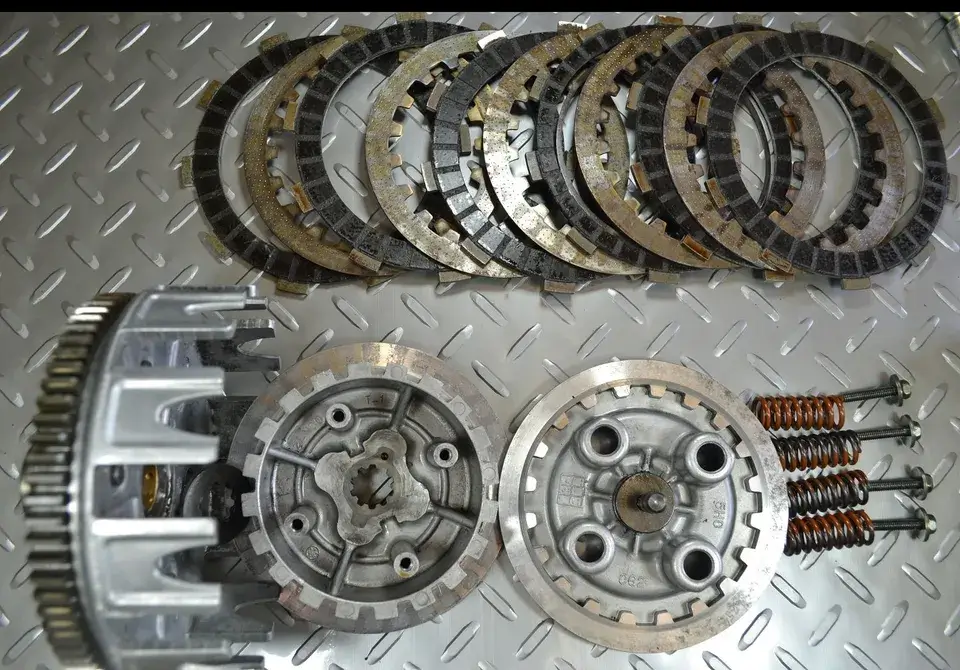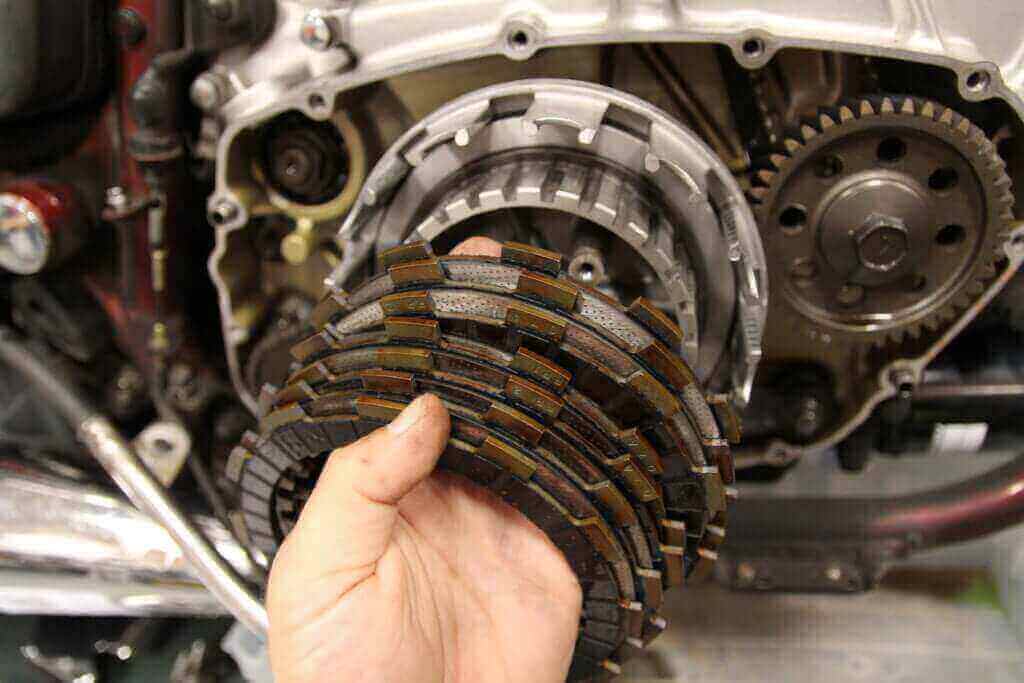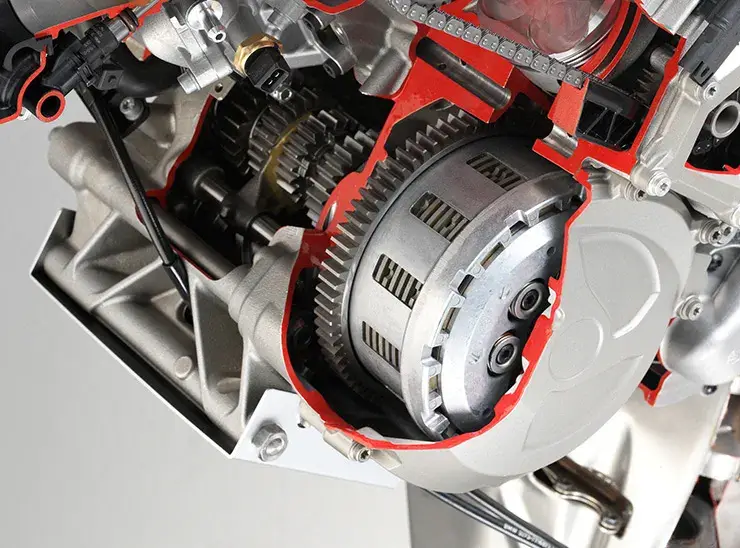For hands-on motorcycle riders who are not only passionate about the thrill of the open road but also eager to dive into the mechanics of their two-wheeled companions, understanding the clutch system is essential. In this comprehensive guide, we’ll take you through the inner workings of a motorcycle clutch, highlight the key distinctions between motorcycle and car clutches, and provide valuable maintenance advice to keep your bike’s clutch in prime condition. Whether you’re a DIY enthusiast or a budding motorcycle mechanic, this article will serve as your road map to clutch mastery.
How Does a Motorcycle Clutch Work?
Understanding how a motorcycle clutch works is crucial for any rider who wants to take full control of their bike. A motorcycle clutch is a mechanical device located between the engine and the transmission. Its primary purpose is to engage or disengage the engine’s power from the transmission, allowing you to shift gears and control the bike’s speed.
Here’s a step-by-step explanation of how a motorcycle clutch works:
- Clutch Lever: The rider operates the clutch lever, typically located on the left handlebar. When you squeeze the clutch lever, you disengage the clutch, and when you release it, you engage the clutch.
- Clutch Cable or Hydraulic System: When you pull the clutch lever, it activates either a cable or hydraulic system. This, in turn, exerts force on the clutch plates.
- Clutch Plates: Inside the clutch assembly, there are two sets of plates – friction plates and steel plates. When the clutch lever is released (clutch engaged), these plates are pressed together tightly due to spring pressure.
- Friction and Steel Plates Interaction: When the plates are pressed together, there is a high frictional force between the friction plates and steel plates. This frictional force locks the engine’s crankshaft to the transmission input shaft, transferring power from the engine to the transmission, and ultimately, to the rear wheel.
- Clutch Disengagement: When you pull the clutch lever, it releases the pressure on the clutch plates. This action separates the friction plates from the steel plates, breaking the connection between the engine and the transmission. As a result, the engine’s power no longer reaches the rear wheel.
- Shifting Gears: With the clutch disengaged, you can now shift gears without causing any damage or grinding of gears. When you shift, the transmission selects a different gear ratio for the rear wheel, allowing you to change speed and power delivery.
- Releasing the Clutch: After shifting, you gradually release the clutch lever. As you do, the clutch plates re-engage, and the friction plates and steel plates come into contact again. Power from the engine is now transferred to the transmission and rear wheel, propelling the motorcycle forward.
The key to using the clutch effectively is finding the right balance between engaging and disengaging it. Smooth clutch operation ensures seamless gear changes and prevents stalling or damaging the engine or transmission.
Additionally, some motorcycles are equipped with a wet clutch, which is bathed in oil for cooling and lubrication. Others have a dry clutch that operates without oil. Wet clutches tend to be smoother and longer-lasting, while dry clutches are often found in high-performance motorcycles and require more precise control.

Differences Between Motorcycle and Car Clutches
Motorcycle clutches differ significantly from their car counterparts due to the unique nature of two-wheeled vehicles:
Wet vs. Dry Clutches: Many motorcycles use a wet clutch system, where the clutch plates are bathed in oil for cooling and lubrication. This design contributes to smoother engagement and longer clutch life. In contrast, most cars use dry clutches, which are not lubricated by oil.
Manual vs. Automatic: Most motorcycles employ a manual clutch that requires rider input for engagement and disengagement. In contrast, automatic transmissions in cars often use torque converters or dual-clutch systems that require no manual clutch operation.
Compact Design: Motorcycle clutches are engineered to be compact and lightweight due to the limited space available on a bike. Car clutches, on the other hand, are typically larger and designed for the extra weight and power of an automobile.
Slipper Clutches: Some high-performance motorcycles are equipped with slipper clutches, which reduce the risk of rear-wheel lockup during aggressive downshifting. This feature is rarely found in car clutches.

Maintenance Tips for Your Motorcycle Clutch
Maintaining your motorcycle’s clutch is essential for smooth and safe riding. Here are some maintenance tips to keep your clutch in top condition:
Regular Inspection: Periodically inspect the clutch lever for free play and adjust it according to your motorcycle’s manual. Ensure the clutch cable or hydraulic system is in good condition.
Lubrication: If your bike uses a cable-operated clutch, lubricate the cable to prevent it from binding or fraying. For hydraulic clutches, check the fluid level and replace it if it’s contaminated or low.
Clutch Plate Inspection: Over time, clutch plates can wear out. Inspect the clutch plates for wear and replace them if they are nearing their service limit. This is a relatively straightforward task for those comfortable with basic motorcycle maintenance.
Avoid Riding the Clutch: When at a stop, refrain from partially engaging the clutch for extended periods. This can lead to overheating and premature wear.
Practice Smooth Shifting: Smooth, controlled shifting reduces stress on the clutch and extends its life. Avoid excessive clutch slipping during gear changes.
Maintain Proper Chain Tension: If your motorcycle uses a chain drive, ensure the chain is properly tensioned. A loose chain can cause excessive wear on the clutch.
Clutch Cable Replacement: For cable-operated clutches, consider replacing the clutch cable at regular intervals to prevent unexpected failures.
By understanding the inner workings of your motorcycle’s clutch, recognizing the differences from car clutches, and following these maintenance tips, you’ll not only have a smoother riding experience but also the confidence to tackle clutch-related issues when they arise. So, gear up, roll up your sleeves, and dive into the world of motorcycle mechanics, knowing that you’re in control of your ride both on and off the road.

